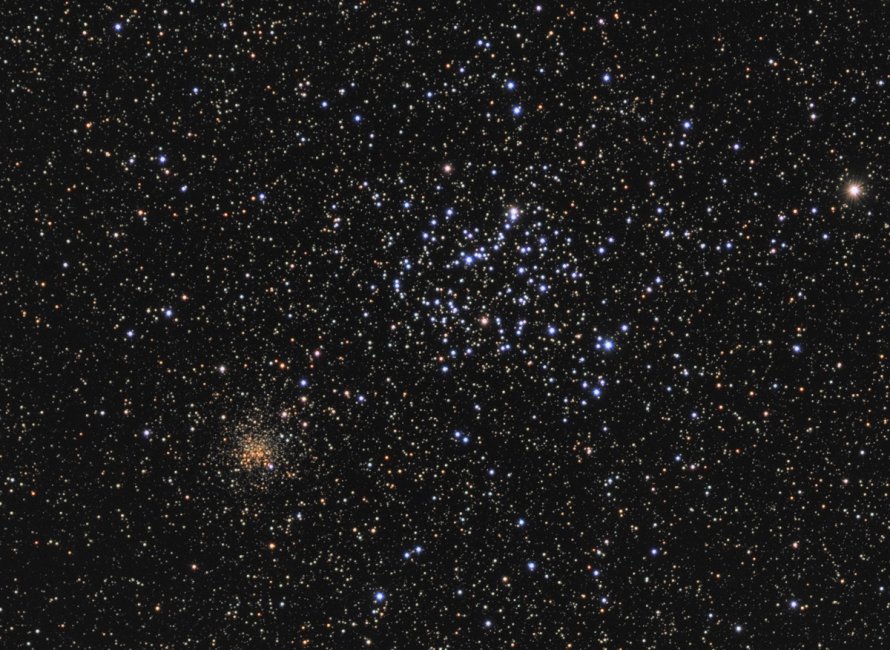M35 (NGC 2168)
Messier 35 (NGC 2168) is an open cluster located in the constellation Gemini, in the Perseus Arm of the Milky Way Galaxy in the Local Group of galaxies. M35 is 3900 light years away from Earth.
M35 is best viewed during winter, is magnitude 5.1, and can be viewed with naked eye (barely). M35 is 28' in apparent size. For reference, the full moon is 30'.
Observing difficulty: Easy
- Name:
- Type:
- open cluster
- Constellation:
- Gemini
- NGC or IC:
- NGC 2168
- Magnitude:
- 5.1
- Viewing:
- naked eye (barely)
- Size:
- 28'
- Distance (light years):
- 3900 LY
- RA:
- 6h 8.9m
- Dec:
- 24 20'
- Season:
- winter
- Milky Way location:
- Perseus Arm
- Galaxy group:
- Local Group
- Messier Marathon #:
- 17
* The naked eye can see up to magnitude ~7-8 objects under ideal dark sky conditions.
A Sparkling Gem in Gemini
In the vastness of the Milky Way galaxy, certain celestial objects capture our fascination with their spectacular beauty and intriguing scientific importance. One such object is Messier 35, a prominent open star cluster in the constellation Gemini. This article delves into the rich details of M35, exploring its history, characteristics, astronomical significance, and tips for viewing this stellar congregation.
Discovery and Observation History
M35 was first discovered by Swiss astronomer Philippe Loys de Ch?seaux in 1745. However, it was French astronomer Charles Messier who cataloged it in 1764, hence its Messier designation. The cluster has since been a subject of interest for both professional and amateur astronomers, drawn to its relatively bright and rich collection of stars.
Physical Characteristics and Magnitude
Messier 35 is a sprawling open cluster approximately 2,800 light-years away from Earth. It spans some 24 light-years in diameter, comprising several hundred stars. These stars are relatively youthful, with an estimated age of 110 to 140 million years. The cluster's most massive and brightest stars are hot, blue main sequence stars and evolved giants, illuminating the cluster with a combined apparent magnitude of 5.1, making M35 a tantalizing target for skywatchers.
Astronomical Significance
M35 provides a unique window into stellar evolution due to its relative youth and the diverse array of stellar types it hosts. Observing such clusters allows astronomers to study a group of stars of similar age but different masses, enhancing our understanding of how stars develop and change over time. In addition, M35 is remarkable for its proximity to another, much older and fainter cluster, NGC 2158. The juxtaposition of these two clusters ? one young and loose, the other old and dense ? offers a fascinating contrast and an excellent case study for stellar and galactic evolution.
Finding and Viewing M35
Messier 35 is located in the constellation Gemini, near the bright star Eta Geminorum. To locate it, one can draw an imaginary line between the stars Castor and Betelgeuse in Orion. M35 lies about halfway along this line. The best time to view M35 is during the winter months when Gemini is high in the sky. The cluster's magnitude of 5.1 allows it to be just visible to the naked eye in a dark, clear sky. However, binoculars or a telescope will significantly improve the viewing experience, resolving the dense grouping of stars that form this stunning cluster. High-quality telescopes may also reveal the nearby cluster NGC 2158.



